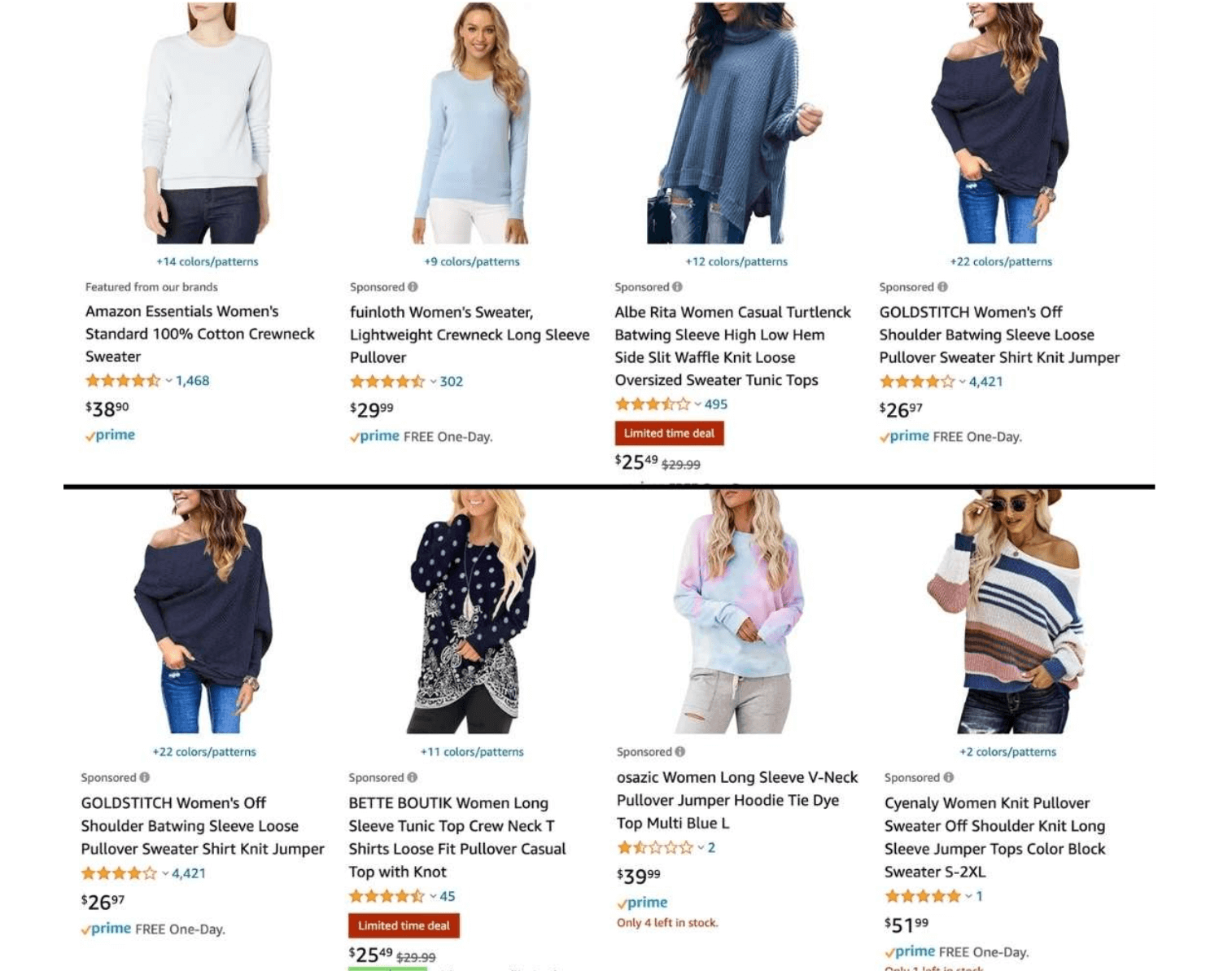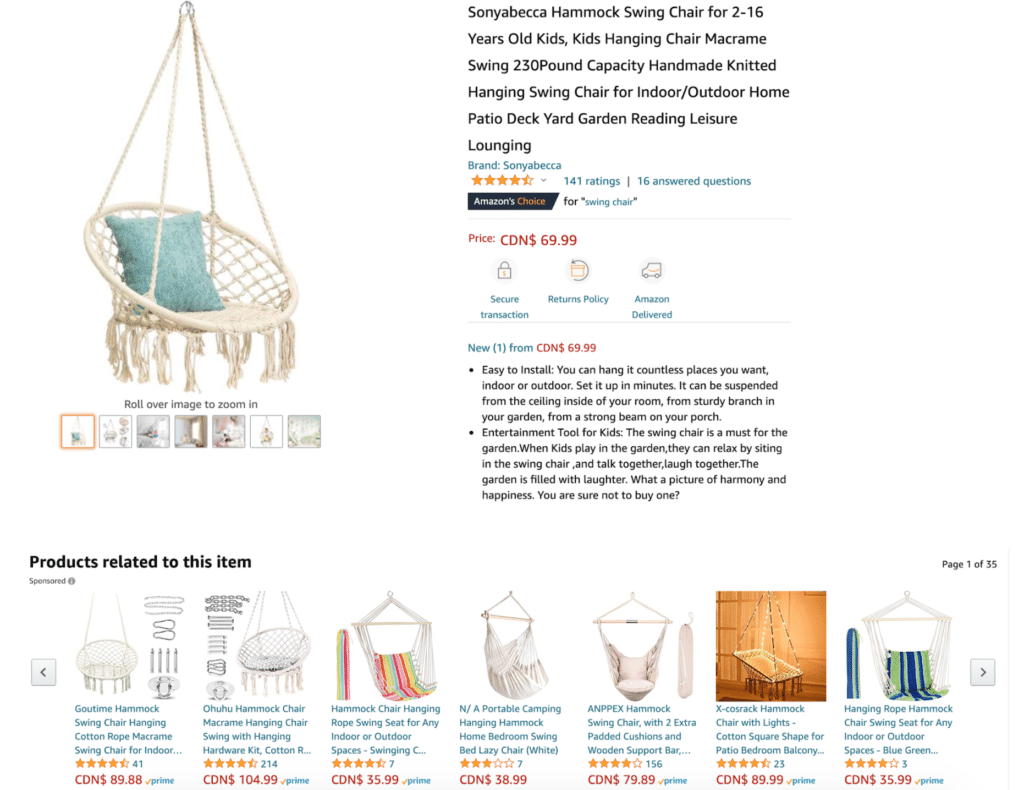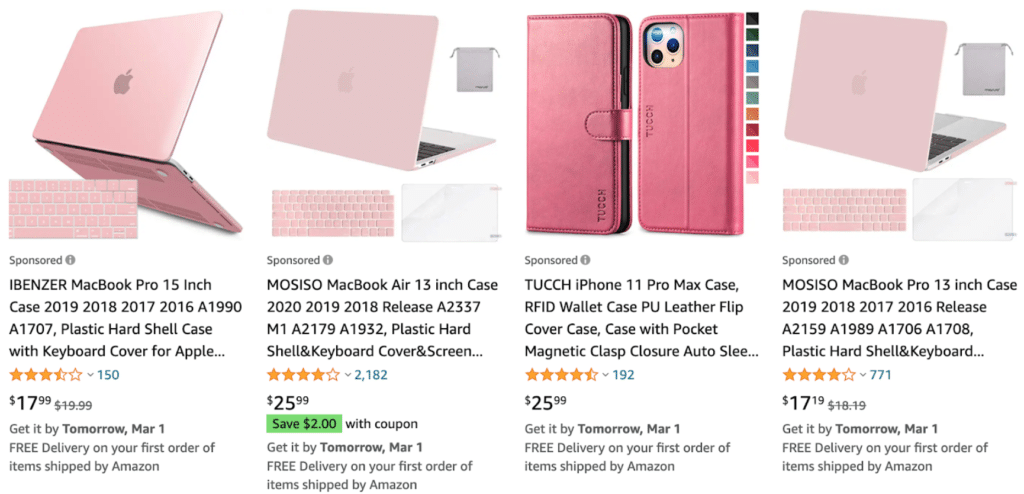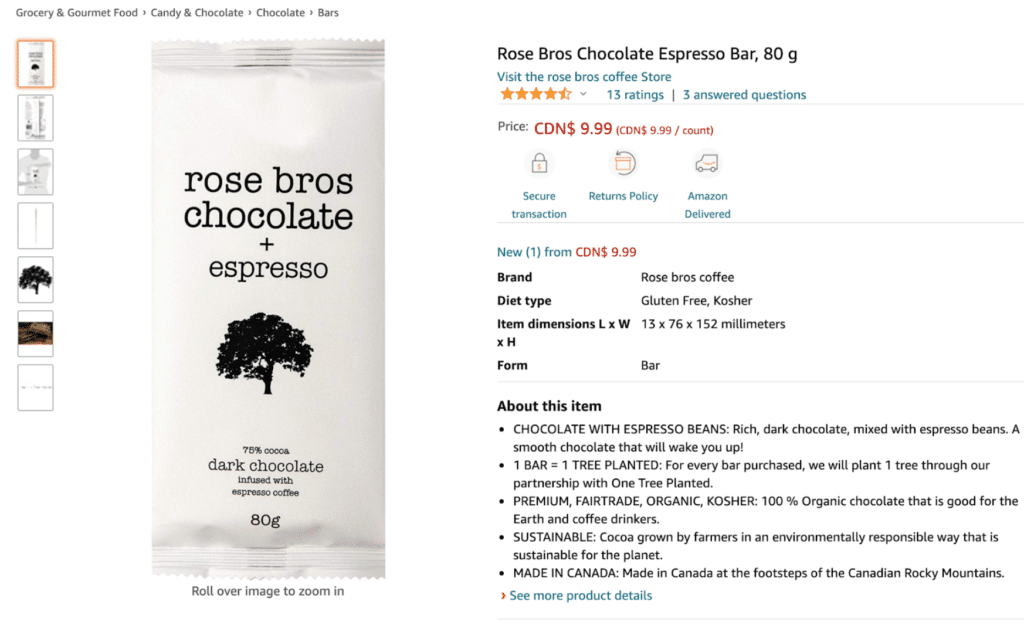When it comes to Amazon advertising, intelligently targeting your competitors is a big part of building a successful strategy.
Think about these questions as you browse for products on Amazon:
- How much time do you spend researching products before making a decision?
- While researching, how many different products do you look at?
- How many different variations of words or phrases do you type when searching?
Taking these questions as a consumer and applying them to your strategy as a merchant can help you show up on competitor listings and steer customers toward your product instead.
The truth is, 81% of shoppers research products online before purchasing them, and Amazon sells more than 12 million products with more than 3 million sellers. That means competition on Amazon is fierce, but it also means customers spend a long time researching products before making a final decision.
The more time customers spend researching, the more information they discover about the features they’re looking for. Customers will use many keyword variations to look through products before making a decision, and your product must show up on these keywords and competitor listings throughout the entire customer journey.
So how can you do this? That’s what I’m going to walk you through right now. Step one is to identify your competitors.
1. Identify your competitors based on similarities
Discover relevant keyword opportunities
Once you’ve identified your competitors, see if there are any relevant keyword opportunities the competitor is using that you may have missed. With so many sellers and products on Amazon, casting a wide net of keywords is essential for product discovery, no matter what stage of the buyer’s journey the customer is at.
Looking at your competitors’ product titles, descriptions, content, feature bullets and reviews can inform you of new, relevant keyword opportunities that you can also target. This is important because every customer researches products in different ways and uses various words. If you aren’t showing up on every one of those search terms, you’re missing a large group of customers that could be discovering your product.
Here’s an example: in North America, people use the word sweater when searching for a piece of clothing to keep them warm. However, in the UK a sweater is often referred to as a cardigan or a jumper. Essentially, there are three different ways to name the same one item, which is why you’ll want to use a variety of keywords in your advertising strategy to ensure your product appears when customers search all three.
In the image below, you can see the results page for “blue sweater” versus “blue jumper” are very similar.

Using short-tail and long-tail keywords for “sweater,” “jumper” and “cardigan” will give you a much larger audience, and oftentimes these keyword opportunities are discovered by taking a peek at your competitors’ pages.
2. Target competitor ASINs where you’re positioned well
ASIN stands for Amazon Standard Identification Number: an identifier of 10 letters and/or numbers for a product on Amazon. It’s used for product-identification in Amazon’s giant product catalog.
Only target competitors that you can realistically compete with. As a small- to medium-sized business, you don’t want to compete with a large enterprise company that has tons of brand awareness. Focus on competitors that are similar to your size, price, and product.
As the name suggests, targeting a competitor’s ASIN positions your ad on an ASIN product page in the “products related to this item” section. In the image below, you can see a hammock swing priced at $69.99. In the sponsored ads section of that ASIN page, the competitor products are all similar to the product, features, and price.

Don’t shy away from advertising on competitor ASINs where your products are positioned well. This should be in addition to bidding on competitor keywords, so you can have your products show up in relevant search results where your products offer similar features, cost, and quality.
Ensure you’re targeting only relevant keywords
For each competitor ASIN, there are a few metrics to consider: keywords (long-tail and short-tail), organic volume, and related products to each listing. Track the keywords each competitor is ranking for on the first page and use those keywords in your own listings.

As a pro tip, it’s important that your keywords match the products you sell. While it’s a best practice to cast a wide net by targeting exact, phrase and broad match types, and you don’t want to focus too narrowly on matching your exact product description, the keywords you use still must relate to the product you’re selling.
By targeting irrelevant keywords, you’ll drive a major increase in ACoS by spending money on clicks that don’t convert. You can see an example of this below from the keyword “rose MacBook cover.” In the image, only three of the four sponsored listings are relevant to the keyword, so the pink phone case is likely not converting well.

Keep in mind it’s a good idea to target both high-volume and low-volume keywords by using a blend of both high-volume and long-tail keywords. The key is to bid conservatively on high-volume keywords to drive a high amount of traffic while also keeping the cost manageable. You should supplement those with higher-margin, long-tail keywords.
3. Negate ASINs that are costly and not converting
When it comes to targeting competitor ASINs, you’ll want to avoid pages that are costing you too much money and aren’t converting well. On many occasions, these high-cost-low-converting pages are due to merchants spending their ad dollars on ASINs they aren’t positioned well to compete with.
What does this mean, exactly?
For one, ensure you’re targeting competitors in your same price range. Don’t try to compete with brands that are selling luxury products at a much higher price if your product doesn’t offer the same features and price range.
It’s also a best practice to target competitors with similar reviews and ratings: if you’re trying to compete on an ASIN that has thousands of reviews, and your product has under 100 reviews, it’s going to be difficult to beat the competitor since they have more brand credibility.
Find your market and hone in on it. Let’s look at an example with Lindor Chocolate.
Example: Small chocolate merchant vs. Lindor
If there’s a medium-sized business selling chocolate and their product listing has 4 stars and under 20 reviews, their best option is to target other small- to medium-sized chocolate businesses with 3-4 stars and under 20 reviews.
In this case, if a customer lands on one of the chocolate merchant’s competitors, there’s a chance for the merchant to convert them to their listing because the competition is considered equal.

But if that same merchant were to try and advertise their chocolate on a product page like Lindor, they wouldn’t be able to compete with Lindor’s 500+ ratings and reviews, which tells shoppers Lindor is a trusted brand by hundreds, drowning out the small chocolate merchant’s product listing and increasing their ad costs for no return.

As an Amazon merchant, your goal is to compete with ASINs that have a similar product at a similar price with equal ratings and reviews.
Start intelligently targeting competitors on Amazon
While there’s a lot to consider when targeting your Amazon competitors, don’t get discouraged. With a few simple tips and optimizations, you can create Amazon ads that target relevant keywords and ASINs where you’re positioned to convert well.
So what should you remember? Here are the main takeaways:
- Intercept customers on their journey by identifying your competitors based on similarities to their offering, pricing, and reviews.
- Harvest your competitors’ keywords to discover new ways shoppers can find your product.
- Don’t shy away from advertising on your competitors’ ASINs where you are positioned well.
- Negate targeting any ASINs that are costing you and not converting well.
Now that you’ve got this info, you can lower ACoS and increase conversions. And Trellis can help you with your Amazon advertising and keyword targeting. In fact, our advertising optimization technology can 10X your ad ROI.
With Trellis’s intelligent keyword research tools, you can find top-performing keywords and new keyword opportunities in a single click. You can say goodbye to keyword research — automated search-term harvesting makes keyword management effortless.
To learn more about Trellis’ tools and advertising strategy, download our free three-point strategy today to see how you can better optimize your advertising campaigns.



